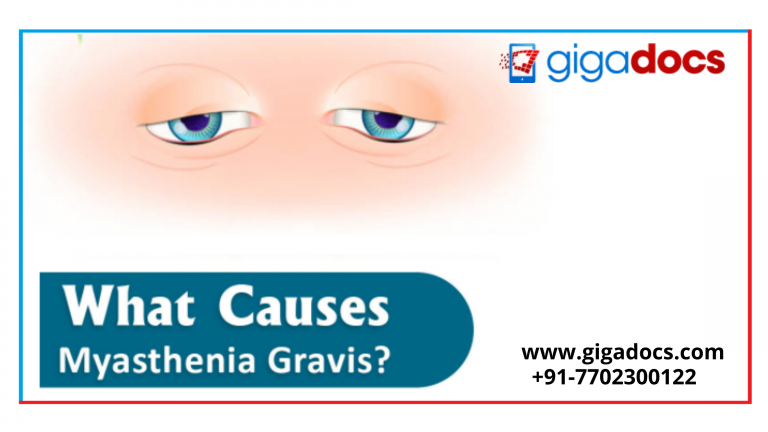Myasthenia Gravis (MG) is an incurable neuromuscular disease that causes skeletal muscle weakness. Skeletal muscles are the muscles that enable your body to move. Myasthenia gravis develops when the nerve cells and muscles cannot communicate with one another, resulting in muscle weakness that hinders critical muscle contractions.
Prescriptive treatments can remarkably help decrease Myasthenia Gravis (MG) symptoms such as muscle weakness in the arms and legs, drooping eyelids, trouble speaking, double vision, chewing, swallowing, and breathing.
Promoting Myasthenia Gravis Awareness
June is the Myasthenia Gravis awareness month. This month, the myasthenia gravis community comes together to promote awareness of the condition and gain a better understanding of the problems and opportunities that everyone in the MG community faces. In addition, to encourage research and show support for people with the Myasthenia Gravis condition.
Myasthenia Gravis Symptoms
Myasthenia gravis causes muscle weakness. These symptoms tend to worsen over time, usually within a few years of the disease’s onset.
- Eye muscle problems – More than half of those with myasthenia gravis experience eye muscle problems as their first sign and symptom, like experiencing double vision (diplopia) when one eye is closed.
- Face and throat muscle problems- In addition to eye muscle problems, myasthenia gravis symptoms are initially most commonly observed in the face and throat muscles, accounting for roughly 15% of cases.
- Speech impediment- A person’s capacity to communicate is affected by a speech impediment. The voice may sound soft or nasal, depending on which muscles are affected.
- Tough swallowing- Myasthenia gravis makes it tough to swallow. One might choke easily, making eating, drinking, and taking medicines difficult. In some cases, liquids that one is trying to consume may come out of your nose.
- Effect on chewing- The chewing muscles may get fatigued midway through a meal, especially if you’ve been eating something that is challenging to chew, like nuts.
- Alter facial expressions- Myasthenia gravis may change your facial expressions; for instance, you could lose your ability to smile.
- Weak neck and limb muscles- Myasthenia gravis can weaken the muscles of your neck, arms, and legs, affecting your ability to walk and carry your routine tasks.
What Causes Myasthenia Gravis?
Autoimmune conditions are the primary cause behind MG. Instead of attacking the foreign, harmful substances in the body, our immune system mistakenly targets the healthy tissue or the neuromuscular junction. Damage caused to the neuromuscular membrane lowers the effectiveness of the neurotransmitter acetylcholine (a branch of the peripheral nervous system), which is behind the nerve cell-muscle communication, resulting in Myasthenia Gravis.
Complications for Myasthenia Gravis
In extreme Myasthenia Gravis cases, the patient’s respiratory muscles grow so weak that they are unable to breathe normally. This potentially fatal consequence necessitates immediate medical attention and the use of mechanical ventilation. Besides, the following conditions are observed-
- Aggravated thyroid problems include both hyperactive and underactive thyroid among those who have a thyroid.
- Lupus inflammation may have an adverse effect on the blood, heart, lungs, joints, skin, and kidneys.
- Those with a history of rheumatoid arthritis have inflammation and stiffness in their joints and surrounding tissue.
How is Myasthenia Gravis Diagnosed?
Your doctor will conduct a thorough physical examination and collect a complete evaluation of your symptoms. They will also do a neurological exam, which could include:
- Testing of your reflexes.
- Searching muscular weakening signs.
- Examining muscle tone like eye movements, testing motor functions, such as asking you to lift an object.
Treatment Options for Myasthenia Gravis
Myasthenia Gravis has no known cure. The prescriptive treatment aims to limit your immune system’s activity and manage your symptoms.
- Corticosteroids and immunosuppressants- These drugs help to reduce the aberrant immunological response which occurs in MG patients. Additionally, cholinesterase inhibitors like pyridostigmine (Mestinon) can be administered to improve nerve-muscle communication.
- Thymus gland removal- For many people with MG, removing the thymus gland, which is part of the immune system, can be prescribed. Patients usually report reduced muscle weakness when their thymus is removed.
- Plasma exchange- The plasma exchange procedure clears the blood of dangerous antibodies, leading to an increase in muscle strength—Plasmapheresis is prescribed for a short period.
- Intravenous immune globulin (IVIG)- It is a drug used to treat autoimmune MG. Although the exact mechanism of IVIG is unknown, it impacts the production and function of antibodies.
- Lifestyle changes-MG patients must get plenty of rest to avoid muscle weakness. They must also avoid both stress and heat exposure which can exacerbate symptoms.
These treatments will not be able to cure MG. However, patients should notice a reduction in their symptoms. Some people may experience lessening of symptoms, which means they will not need medical therapy.
Consulting for Myasthenia Gravis with Gigadocs
For an accurate diagnosis of Myasthenia Gravis, download the Gigadocs app to consult with specialist neurologists and chest surgeons. Gigadocs is your wellness and healthy living partner, offering you expert consultations that you can avail of from the privacy and comfort of your home. You can now earn points on the Gigadocs app by booking a telehealthcare specialist or using any other Medicare service and redeem them for discounts when consulting doctors on the app.
Download Gigadocs app-
- IOS App – apple.co/2W2iG4V
- Android App – bit.ly/33AQoRC
To know more drop us an email info@gigadocs.com




